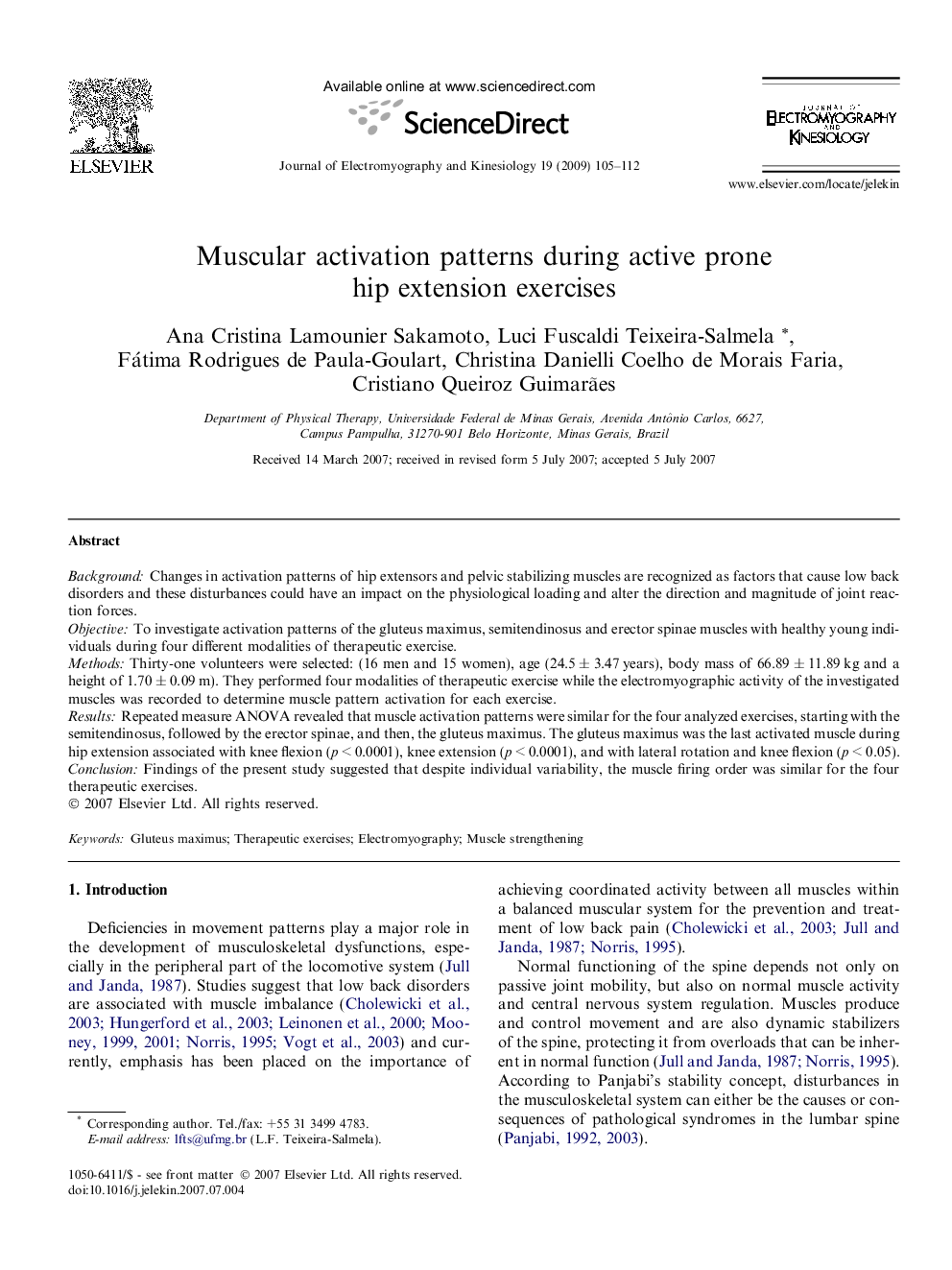| Article ID | Journal | Published Year | Pages | File Type |
|---|---|---|---|---|
| 4065266 | Journal of Electromyography and Kinesiology | 2009 | 8 Pages |
BackgroundChanges in activation patterns of hip extensors and pelvic stabilizing muscles are recognized as factors that cause low back disorders and these disturbances could have an impact on the physiological loading and alter the direction and magnitude of joint reaction forces.ObjectiveTo investigate activation patterns of the gluteus maximus, semitendinosus and erector spinae muscles with healthy young individuals during four different modalities of therapeutic exercise.MethodsThirty-one volunteers were selected: (16 men and 15 women), age (24.5 ± 3.47 years), body mass of 66.89 ± 11.89 kg and a height of 1.70 ± 0.09 m). They performed four modalities of therapeutic exercise while the electromyographic activity of the investigated muscles was recorded to determine muscle pattern activation for each exercise.ResultsRepeated measure ANOVA revealed that muscle activation patterns were similar for the four analyzed exercises, starting with the semitendinosus, followed by the erector spinae, and then, the gluteus maximus. The gluteus maximus was the last activated muscle during hip extension associated with knee flexion (p < 0.0001), knee extension (p < 0.0001), and with lateral rotation and knee flexion (p < 0.05).ConclusionFindings of the present study suggested that despite individual variability, the muscle firing order was similar for the four therapeutic exercises.
